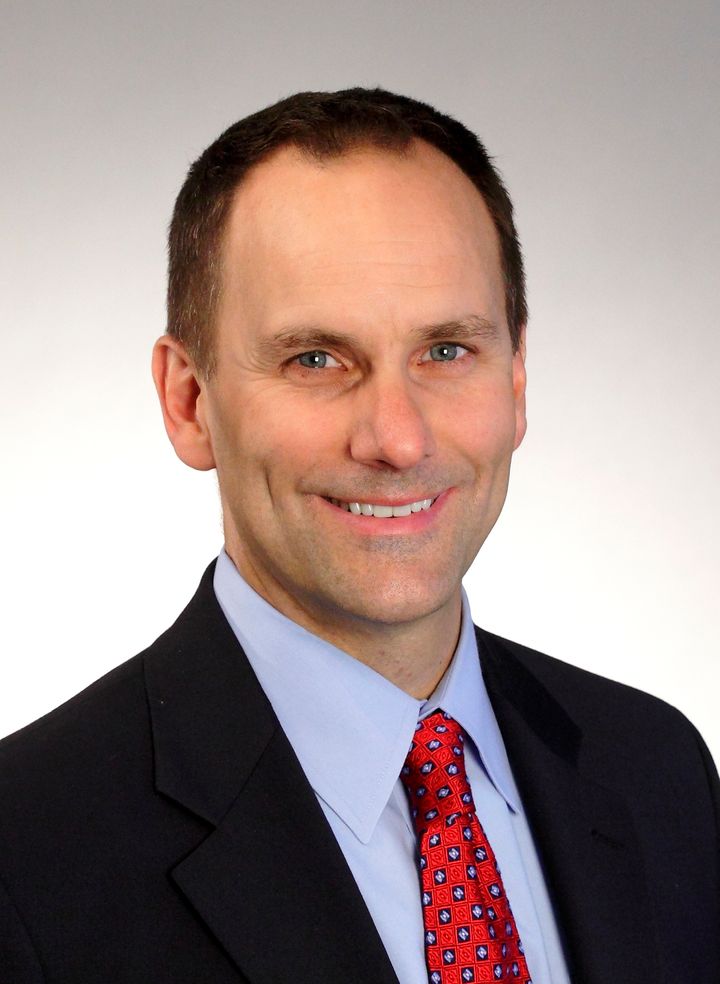
John Bissell
In October 2015, John Bissell was named President and CEO of Greylock Federal Credit Union, a $1 billion community lending institution in the beautiful Berkshire hills of Western Massachusetts. As CEO, Mr. Bissell has ten direct-reports and leads an organization of more than 250 employees, between the credit union’s core banking business and several subsidiaries offering insurance and investment services for families and businesses, as well as marketing and IT services for credit unions across the country.
Mr. Bissell, who grew up in the Berkshires, has a deep commitment to the local community, its economy and its people. His personal connection runs very deep as Greylock Federal Credit Union was born as the credit union for employees of GE in Pittsfield, Massachusetts, where Bissell’s own father worked for 30 years. Mr. Bissell came to work at Greylock in 2003 upon his return to the Berkshires after ten years on the West Coast. He worked his way up the ranks at Greylock from Vice President to Senior Vice President to Executive Vice President, before assuming the top job.
As a not-for-profit financial cooperative (which makes every depositor an owner), Greylock has an unusually high market share for an institution of its size. While, nationally, credit unions account for about 7% of the overall banking market, in the rural market of Berkshire County, more than 50% of the 130,000 residents are Member/Owners of Greylock, making it the top provider of home mortgages and auto loans in the region. Mr. Bissell says, “To paraphrase the old movie line, ‘With great market share comes great responsibility.’” Greylock plays a vital role in the local economy, and Mr. Bissell says, “Our vision is that our credit union, with a lot of partners, will enable our community to thrive. Our mission is to be a community credit union that partners with you and provides the key to enrich your life. I feel very fortunate to work in an environment that aligns so well with my personal values.”
How has Greylock been able to capture such outsized market share? In keeping with his character as a leader eager to share credit, Bissell immediately gives a lot of credit to his Board: “It helps that our charter requires a volunteer Board of Directors; we have a superb group of community leaders on our Board, and they keep me firmly grounded in what is best for local families and small businesses. In running a local retail banking operation, our volunteer Board represents a huge advantage over publicly traded banks with highly compensated Directors trying to compete against us. There is no way they can be as close to the market as we are.”
Over the past six years, Greylock has transitioned from a traditional top-down management structure to a coaching culture. Every one of the managers in the organization is trained in coaching techniques, and Mr. Bissell and his team work hard to promote the idea of “coming alongside” team-members rather than pulling or pushing employees along. Mr. Bissell meets with every single direct-report twice per month for at least an hour, and reports that “80% of the time we are following their agenda or working through something they have raised as a concern, challenge or opportunity.” And he sees himself as a coach. What is his style? “In my view the two most powerful ideas in our coaching approach are
- that I need to identify more potential in my direct reports than they see in themselves; and
- the best ideas for how they can move themselves or their teams forward will come from their own thinking, not from me.
Most often our coaching conversations lead to solutions I would never have dreamed up on my own.”
The Leadership Wisdom of John Bissell
Trust is the essential ingredient. With it, everything is possible, and without it, you really are not going to have a strong effective organization, especially if you are counting on Millennials to join you and help you. Millennials will leave a low trust organization very quickly. And they will tell all their friends. Thankfully the converse is also true.
Do not retreat into the corner office to think big-thoughts. Instead use every conversation with employees, Board and stakeholders to reinforce the connection between the mission and vision and the day to day work that is in front of us.
The cardinal rule of hiring: DO NOT RUSH. I spend very little time on the resume, but rather look for chemistry. The best technique I have learned is to quiet my mind and tune in to the feeling I am getting from talking to this person. I would rather delay a hire for months until we have the right fit, rather than speed up to fill a hole, or hire a hot shot with a great resume even if things don’t feel right. The cost of making a bad or even mediocre hire is unacceptably high, especially in a relatively small community organization like ours.
Impatience can be a great weakness. It takes real effort to listen carefully to one’s employees when one’s mind is racing ahead to solutions or on to some other topic. Whenever a leader sprints ahead mentally, and fails to listen attentively, we all pay a price as a team.
When the members of a Senior Management team are not in real alignment, this translates into disconnects deeper in the organization, producing wasted effort. That’s why I spent most of my first year just working on building trust and collaboration and alignment amongst the top 12 people in the organization, figuring that I could not expect alignment and “synch” deeper in the organization unless the honchoes were seen as collaborating. I threw away the old Senior Management meeting format which was largely a decades-old ritual of “reporting out.” Decision making happened behind closed doors, not out in the open. We now only talk about the things that matter, and we all know what big decisions are being made and why. We challenge each other. We recognize that uncomfortable meetings are usually our most productive. Our performance is improving rapidly, even though our basic plans, strategies, and compensation are all the same as before.
Conflict is not a bad thing, if it comes from the right motivations and is managed constructively. (I don’t mean petty conflicts.) The kind of healthy conflict I am referring to is people going at it to stick up for the priorities they care most about. For years, we had zero conflicts in our Senior Management meetings, and I have learned that is a very bad sign. We now have uncomfortable interactions on a fairly regular basis because people are more genuine with each other, and they are more likely to hold each other accountable.
We start every meeting at every level with a reminder of our vision and mission and values (and I talk about them incessantly). When an employee is faced with a decision, at any level, if they act in accordance with our guiding principles, they are most often going to get it right, without a higher-up directing traffic. That feeling continues when we insist on recruiting ONLY those people who share the same values. It is also essential to remember that employees take their cues from their managers and supervisors much more than from some formal plan or announcement.
The deepest insights and the greatest wisdom come from the front lines where our employees are directly engaged with our Member/Owners. We have started to bring Tellers and Member Service Representatives into our Senior Management meetings. They are treated as “expert witnesses” and full participants when we are developing strategies to improve performance. These are some of our employees with the least formal authority in the organization, yet we make clear they have among the most important insights. If they start to see us acting on their recommendations, I think it changes how they view their role and their value to the organization. It flips the “authority” question on its head.
On Millennials in the workplace. I reject the myths about them being narcissists (“because they like to take selfies”), or being arrogant (“because they expect the CEO to listen to their opinions”). I encourage them to bring on the ideas, bring on the energy. We can’t waste time being offended that they don’t respect hierarchy. We Gen Xers recognize through trial and error that the command-and-control model is outdated; Millennials were born knowing that.
On Millennials, take two. Millennials want to be heard. We appointed a Millennial Steering Committee, co-chaired by two very talented young women. We asked the group to do some R&D on financial products and services that would meet their needs better than the traditional product shelf their parents embraced. After a few months, they made a presentation to the Senior Management team that blew me away. We had them make the same presentation to the Board of Directors and we are now implementing their suggestions. This group of empowered young professionals is probably the best marketing tool I have for attracting talent.
***
About Bruce Tulgan’s “The Wisdom of Strong Leaders” Series Since 1993, Bruce Tulgan has worked with hundreds of thousands of leaders/managers in hundreds of organizations. Over more than two decades of research, training, and consulting, Bruce has encountered many, many truly great leaders: Strong, highly-engaged, rigorous, and steeped in proven best-practices. All of the best practices in Bruce’s books and articles come from these real strong leaders in the real world. This series is a tribute to the wisdom of some of the very best of the best of those real strong leaders.
About Bruce Tulgan Bruce Tulgan is an adviser to business leaders all over the world and a sought-after keynote speaker and seminar leader. He is the founder and CEO of RainmakerThinking, Inc., a management research and training firm, as well as RainmakerThinking.Training, an online training company. Bruce is the best-selling author of numerous books including Not Everyone Gets a Trophy (Revised & Updated, 2016), Bridging the Soft Skills Gap (2015), The 27 Challenges Managers Face (2014), and It’s Okay to be the Boss (Revised & Updated, 2014). He has written for the New York Times, the Harvard Business Review, HR Magazine, and Training Magazine. Bruce can be reached by e-mail at brucet@rainmakerthinking.com, you can follow him on Twitter @BruceTulgan, Facebook, LinkedIn, or visit his website www.rainmakerthinking.com.
